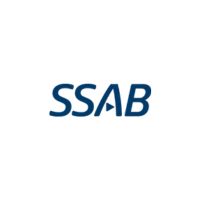Last week the Swedish Chamber of Commerce had the pleasure to talk to John Dekker, Innovation Attaché at the Embassy of the Kingdom of the Netherlands, about the recent Dutch trade mission to Sweden and Finland earlier in November. The mission explored new business opportunities and aimed to strengthen existing relationships with a focus on the energy transition, particularly hydrogen and battery technologies.
Purpose and Expectations of the Mission
The mission was described as a typical trade mission, which included a visit to Sweden for two days and then to Finland, following the Minister’s return from Sweden. The focus was on the energy transition, specifically a hydrogen track and battery technology track. With the expectation to look for new business opportunities, as well as, strengthen current relationships. Due to the early stage of the market, the delegation also aimed to gather insights and evaluate the situation.
“We were also looking at opportunities for the Dutch national battery strategy, and for companies working on next-generation battery technologies,” John explained. As part of this strategy, which focuses on advancing battery technologies, a key highlight of the mission was a visit to Northvolt Labs in Västerås, Sweden—a company at the forefront of next-generation battery innovation.
New Insights and Tangible Results
A significant achievement from the mission was the signing of a Memorandum of Understanding (MoU) between RAI Automotive from the Netherlands and FKG from Sweden. These two organizations, which focus on heavy-duty transport, had previously met during an innovation mission earlier in the year. Their relationship had matured, and the MoU formalized their collaboration, both between the two parties and across Europe. The MoU signing ceremony was a highlight of the mission, with key figures in attendance, including Minister Klever, Ingrid Thijssen, Sweden’s State Secretary, Mr Jevrell, and Jacob Wallenberg.

Sectors with Potential for Collaboration
The mission underscored that the most promising areas for Dutch-Swedish collaboration are in the field of heavy-duty transport, which includes both hydrogen and battery technologies. This sector offers significant potential for both countries. The delegation also pointed to the long-term potential of infrastructure, with a focus on the European hydrogen system and charging facilities for heavy-duty vehicles.
“The heavy-duty transport sector is really significant for both countries, and that’s where we find each other,” John said, adding that while infrastructure projects will take time to develop, they offer substantial long-term opportunities.
The NFIA Nordic Office in Sweden
Another key development during the mission was the opening of the NFIA Nordic office in Sweden. According to the delegation, the main purpose behind this expansion is to enhance collaboration on high-tech and R&D. The Netherlands has shifted its strategy from focusing on attracting factories and jobs to emphasizing high-tech collaborations, with Sweden being a natural partner due to its advanced engineering and innovation capacity.
“The Netherlands recognizes Sweden as an innovation leader,” John stated, highlighting the broad potential for collaboration in areas like defence, life sciences, and cybersecurity.
Looking to the Future
The opening of the NFIA Nordic office reflects the growing emphasis on R&D and high-tech collaboration between the Netherlands and Sweden. With Sweden’s strong R&D presence, particularly in engineering and technology sectors, the two countries are set to work closely in the upcoming years.
In addition, Sweden’s Vinnova recently released a report identifying six core technologies for the future, which overlap significantly with the Netherlands’ own national technology strategy. These areas include quantum technology, AI, big data, and nuclear energy, which are now the focus of joint efforts between the two countries.
“By identifying technologies and connecting them to market opportunities, we can make sure that we are working together to achieve both innovation and commercialization,” John concludes.
Conclusion
The trade mission not only provided opportunities for the Netherlands and Sweden to explore business ventures in energy transition and other key sectors but also showcased the strong relationships between the two nations. With new MoUs signed and future collaborations set in motion, the trade mission successfully laid the groundwork for a deeper, more innovative partnership between the two countries.

































